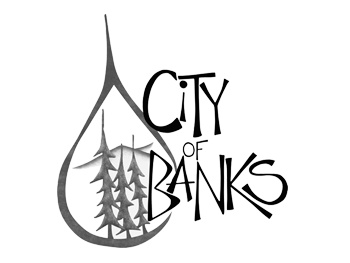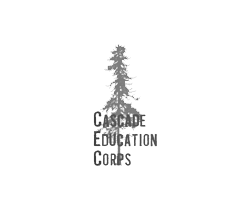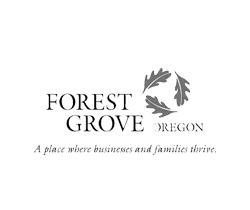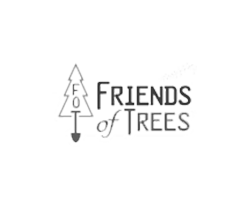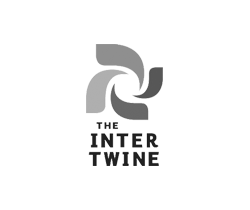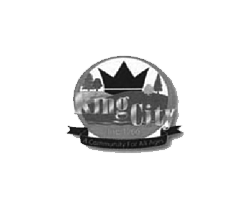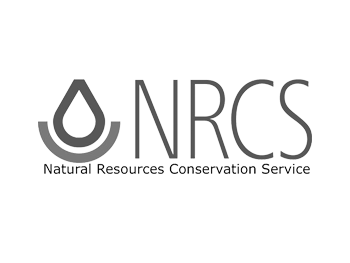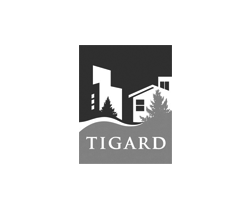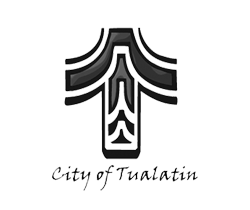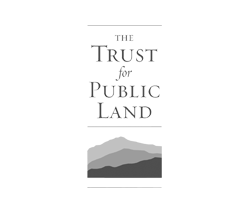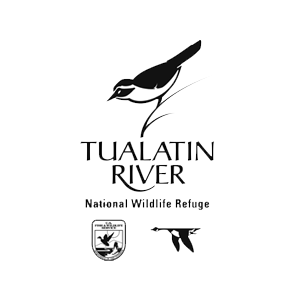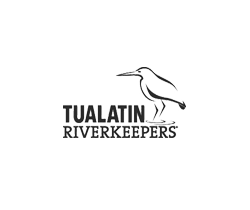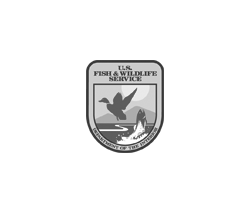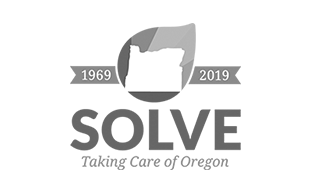Habitat Connectivity is one of two key initiatives identified through the 2023 Tree for All Visioning Workshops. A working group has formed to explore how the collaboration can connect and protect habitats to achieve the common goal of a climate-resilient watershed. Habitat connectivity— a term that describes the health, genetic diversity and disbursement of animal and plant populations in a particular area— is a complex, multi-layered topic that poses considerable challenges to ensuring the health and resilience of a given habitat.
We spoke with Tracey Dulin and Mitch Attig of Clean Water Services about their work as part of the Habitat Connectivity working group and the GIS mapping technology the group is using to pinpoint areas of focus.
Tracey Dulin (center) at a Tree for All visioning workshop in 2023
Tracey, can you tell us a bit about how the working group came to be?
Dulin: The 2023 Tree for All Visioning workshops produced two main initiatives: Healthy Tree Canopy and Habitat Connectivity. Wildlife and connectivity themes emerged as a way to build on each other’s work and reflect the values of our community.
What would you describe as the main goal of the group?
Dulin: By using nature-based solutions and working together, the Tree for All partner projects will enhance, improve, and connect key habitat areas in the Tualatin Basin, and create a healthier and more climate-resilient watershed. That is our goal.
What tools are the group using to advance towards that goal?
Dulin: The Habitat Connectivity group is building on a lot of great work that people have been doing at a regional level, like the Regional Habitat Connectivity Working Group. The Oregon Department of Fish and Wildlife’s Oregon Connectivity Assessment and Mapping Project (OCAMP) has also been doing an Oak Camp project, which identifies wildlife corridors and important habitats at a state level. We are also looking a ground truthed datasets like the Oak Quest Project inventoried oak trees throughout the area. We held a kickoff workshop with some partners this spring, and we started looking at some tools and models to focus our work. Mitch is using GIS modeling to identify areas for wildlife connectivity and for habitat.
Mitch, can you tell us a bit about the GIS mapping and how it applies to this habitat connectivity work?
Attig: My role, and the GIS role in this, is identifying areas in the watershed that are a priority for conservation or restoration through spatial data. The model creates a set of data that shows you how easy it is for things to move around the landscape. I view my job as wading through those priorities and putting other spatial data on it to try to identify whether a certain area is a pinch point that is important to focus on, or whether the area is a diffuse, naturally flowing, healthy area that should be protected.
At what stage in this work is the group currently?
Dulin: We're still really in the formative stages of the work. We had one workshop in the spring, and we're intending to have another workshop in the fall. We started by looking at the mapping tools that have just come out in the last year—models that map the habitat connectivity of the region, so not just the Tualatin Watershed but the entire Portland region.
Our goals are to continue to craft our purpose and our focus. That's the stage we're in. What is our 10-year vision for habitat connectivity? Are we going to increase habitat connectivity by 20%? What does that mean? Are we going to focus on habitats or are we going to focus on specific wildlife species? What really is that connection between all of our partners and the communities we serve?
What are some of the partner organizations that have been part of this work?
Dulin: We had roughly 20 people attend the first workshop. People from Friends of Trees and Tualatin Hills Park & Recreation District, the City of Tigard, Bird Alliance of Oregon, Metro, the Wetlands Conservancy, and others. This is truly a collaborative process. We will keep iterating with the partners to ensure we have the right focus for the common goal.
How has collaboration among the partner organizations influenced the group’s approach to solving these problems?
Dulin: Habitat connectivity and climate resiliency are problems that one agency can't solve by itself. We're going to need multiple solutions.
Also, it's hard to define what habitat connectivity is. Everybody's got their own lens on it. Prioritization on a regional level is hard, but it's fantastic to have a group of people who are interested in preserving and improving habitat connectivity all in one room, wrestling with these hard questions.
Attig: Having worked at Columbia Land Trust previously, I come from a conservation-oriented mindset, whereas organizations like Clean Water Services have more of an enhancement-oriented approach. I think they go hand-in-hand. That's what interested me in the group’s work.
Dulin: One of the exciting pieces has been figuring out how we can connect our programs together on the land. If, say, Clean Water Services is focusing on the stream corridor, and there are oaks in the adjacent neighborhoods, then could Soil and Water Conservation District and the Backyard Habitat Programs outreach to these neighborhoods, and connect both communities and habitats?
Has anything about the working group surprised you?
Attig: I think it opened my eyes to how many groups are involved that I didn’t necessarily associate with ecological work. For example, Tualatin Hills Park & Recreation is very involved in Tree For All. That makes sense now, but at first it was like, "Wait, the people who manage our sports fields? How do they have a connection to all of this?"
But obviously, what they do is a lot bigger than just sports fields. I was surprised by the number of different missions that are all tied together by this work.
What are some of the challenges you anticipate the group tackling in the coming years?
Dulin: What really came up in the first workshop were questions about equity. How do we add the equity layer onto the connectivity and habitat layers in order to prioritize projects? That's an important question.
In terms of projects and areas of focus, different groups have different priorities. There are some folks who want to focus on cold water refuges and aquatic habitats. Other folks want to focus on oak habitat. There's a regional effort to coordinate around amphibian habitat and those sensitive species. But at the end of the day, it's all intertwined, so how do we prioritize and, more importantly, connect and work together?
Attig: Habitat connectivity in an urbanizing landscape is so important. The way that Washington County is growing, you could say that there are three main layers to the issue. First, how do we protect or enhance connectivity within the urban area? Second, how do you urbanize in a way that is healthy and maintains connectivity? And then lastly, in the rural areas, how do you protect those habitats down the road?
What reflections do you have as you think ahead to next steps for the group?
Attig: Habitat connectivity is everywhere, and it's meaningful, even in the most urbanized settings. Habitat is everywhere, species are everywhere. And the web is very complex.
Dulin: When Tree for All was created 20 years ago, the partners had a vision of planting a million trees. Now they’re setting new goals that champion the importance of habitat. In Tree for All’s first 20 years, I've seen many habitats improve. The streams and the forests are healthier than they've been in a long time. But there's still a lot of work to be done.
If you are interested in learning more about the healthy tree canopy working group, please email Tracey Dulin.




